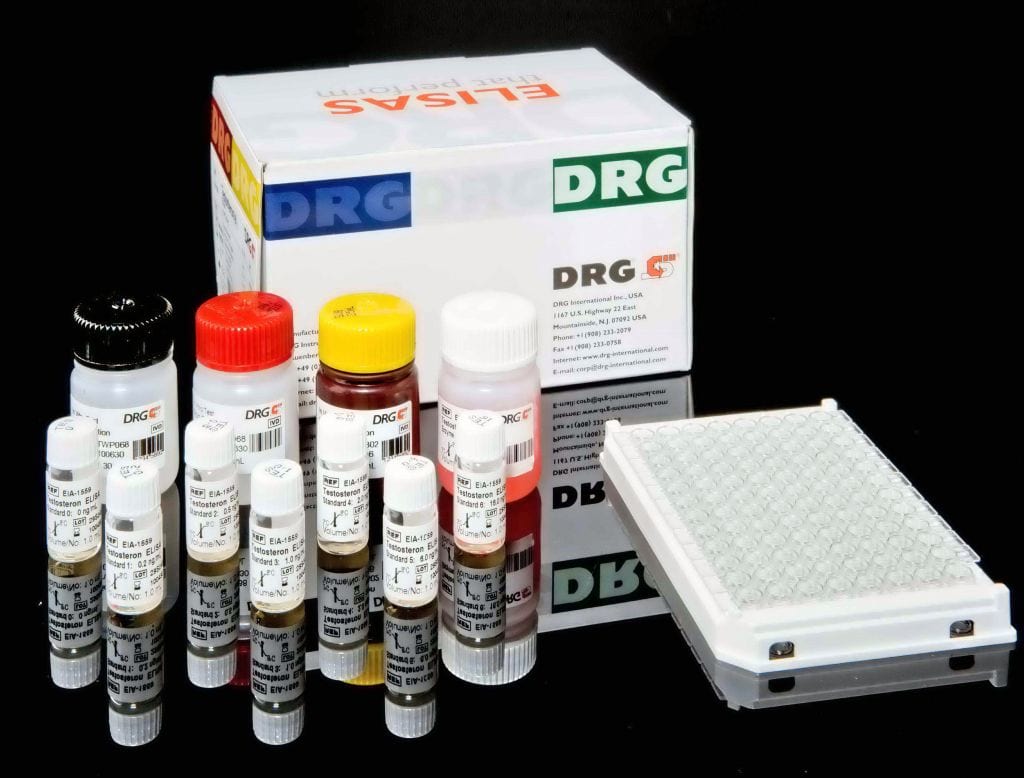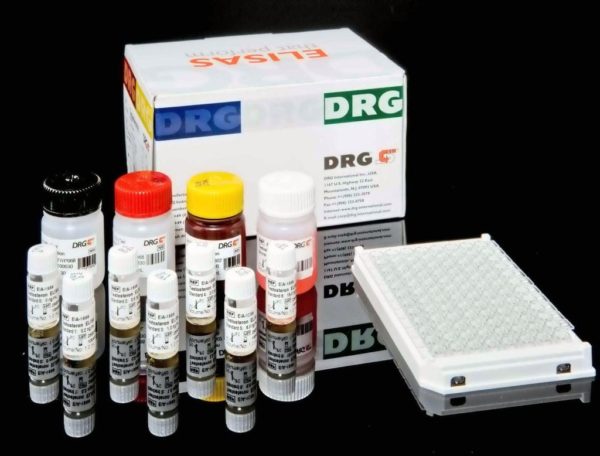Description
An enzyme immunoassay for the quantitative determination of alpha fetoprotein (AFP) in serum.
Alternatively the assay can also be run automatically on an ELISA processor such as the Gemini instrument from Stratec Biomedical. The Gemini protocol is available upon request. Metanephrine (Metadrenaline) is first extracted using an ion exchange matrix followed by an acylation process. The subsequent competitive ELISA uses the microtiter plate format. The antigen is bound to the solid phase of the microtiter plate. The acylated standards, controls and samples and the solid phase bound analytes compete for a fixed number of antibody binding sites. After the system is in equilibrium, free antigen and free antigen-antibody complexes are removed by washing. The antibody bound to the solid phase is detected by an anti-rabbit IgG-peroxidase conjugate using TMB as a substrate. The reaction is monitored at 450 nm. Quantification of unknown samples is achieved by comparing their absorbance with a reference curve prepared with known standards. The antibodies used in this test kit only recognise the biologically relevant L-forms of Metanephrines. Commercially available synthetic Normetanephrine or Metanephrine is always a mixture of the D- and L-form. The ratio between both forms differs widely from lot to lot. This has important implications if synthetic Metanephrines are used to enrich native samples. As only about 50% of the synthetic Metanephrines – the L-portion – will be detected by use of this kit, spiked samples will be underestimated. Therefore native samples containing solely the L-form should be used.Metanephrine and Normetanephrine are the metabolites of the catecholamines Epinephrine and Norepinephrine, respectively. Cells derived from neuroendocrine tumors (e.g.
pheochromcytoma) are known to produce catecholamines which are secreted episodically via vesicles into the blood stream. But beside this a small portion of the catecholamines is metabolized inside the cells to the corresponding catecholamines metabolites – namely Metanephrine, Normetanephrine and 3-Methoxytyramine – which are secreted at low levels continuously into the blood stream. Recent studies and publications have shown that the quantification of these plasma free Metanephrine and plasma free Normetanephrine is the most accurate biochemical marker for the clinical diagnosis of pheochromocytoma and follow-up of pheochromocytoma patients. Therapeutic consequences should never be based on laboratory results alone even if all test results are in agreement with the items as under point ÒProcedural cautions, guidelines and warningsÓ. Any laboratory result is only a part of the total clinical picture of the patient. Only in cases where the laboratory results are in an acceptable agreement with the overall clinical picture of the patient it can be used for therapeutic consequences. The test result itself should never be the sole determinant for deriving any therapeutic consequences.




